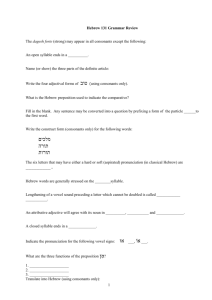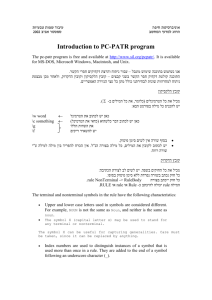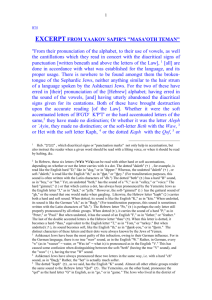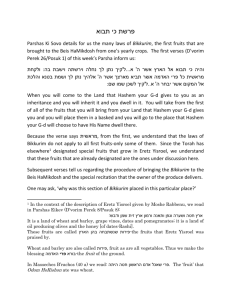דקדוק עברי: הבנת כלל השווא
advertisement
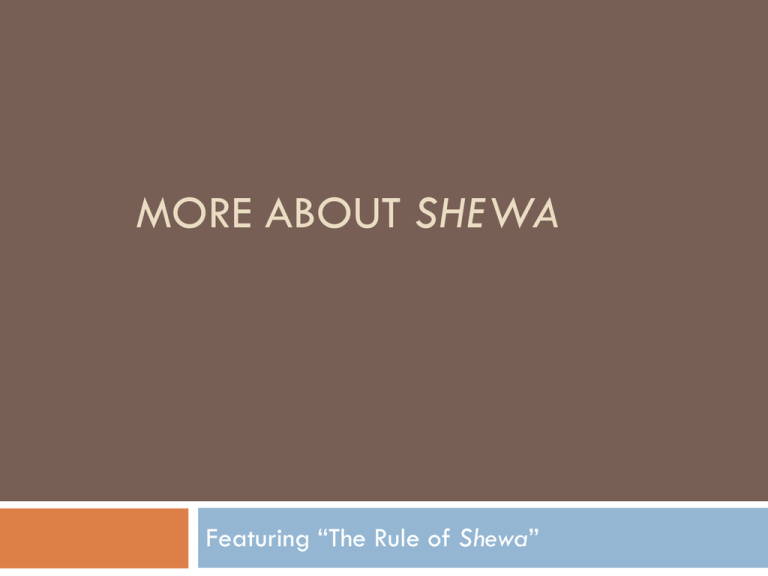
MORE ABOUT SHEWA Featuring “The Rule of Shewa” More About Shewa Two kinds of shewa: Vocal: Really short sound, for example: amuse ְׁשֹלמֹה ְׁשמּואֵ ל Silent: Marks the end of a syllable, no sound. לְָך ָאבְׁ ָרהָ ם More About Shewa Vocal: If a shewa occurs at the beginning of a syllable, it is a vocal shewa. ְׁשמּואֵ ל ְׁש מּו אֵ ל If a shewa follows a long vowel, then it is a vocal shewa. שו ְֹׁפ ִטים ש ֹו ְׁפ ִטים An exception: If the syllable has a long vowel and is a stressed syllable, then it is silent. For example: ( לֵכְׁ נָהvisualize a little stress mark above the lamed) לֵכְׁ נָה Silent: If a shewa occurs at the end of a syllable, it is a silent shewa. If a shewa follows a short vowel, then it is a silent shewa. י ְִׁש ָר אֵ ל י ְִׁש ָראֵ ל More About Shewa Two shewas in a row: When two shewas are next to each other, the first shewa is silent and the second shewa is vocal. כַּ ְׁר ְׁמלִ י One notable exception: ָיל ְַּׁד ְׁת (Carmelite) (both silent) כַּ ְׁר ְׁמ לִ י The Rule of Shewa What happens when two shewas are at the beginning of a word? Rule 1: The first shewa becomes a hireq. (this usually happens when we add a preposition to a word) ְׁשמּואֵ ל ְׁשמּואֵ ל+ ְׁל לְׁ ְׁש מּו אֵ ל לְׁ ְׁשמּואֵ ל לִ ְׁש מּו אֵ ל לִ ְׁשמּואֵ ל The Rule of Shewa Rule 2: If the second shewa is a composite shewa (beneath a guttural), the first shewa will morph and match the vowel of the composite shewa. (composite shewa = partial shewa = khatef qamets/khatef patakh/khatef segol) אֱדוֹם אֱדוֹם+ ְׁל לְׁ ֱא דוֹם לְׁ אֱדוֹם ֶל ֱא דוֹם ֶלאֱדוֹם ֶלאֱדוֹם לַּאֲ דוֹם לָאֳ דוֹם Shewa Summary Vocal: 1. At the beginning of a syllable. 2. After a long vowel (in an unstressed syllable). 3. If it is the second of two shewas (unless at the end of a word). Silent: 1. At the end of a syllable. 2. After a short vowel. 3. If it is the first of two shewas. Special “Rule of Shewa” applies to two shewas at the beginning of a word.
